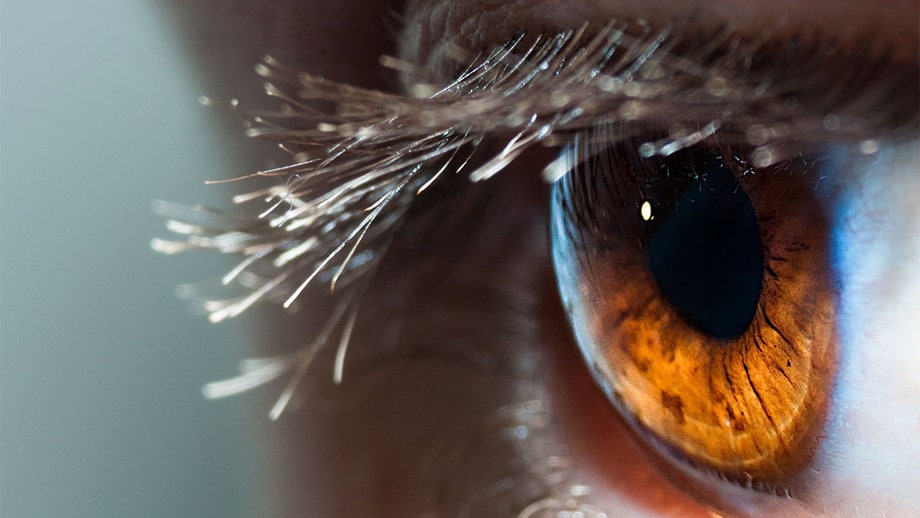Can High Cholesterol Affect Your Vision

This article examines the potential impact of high cholesterol on vision.
It aims to explore the link between high cholesterol levels and eye health, as well as the mechanisms by which high cholesterol can contribute to the development of eye diseases.
Furthermore, it discusses the symptoms of vision problems that may arise as a result of high cholesterol and provides preventive measures to safeguard vision from the detrimental effects of high cholesterol.
Finally, it addresses the importance of seeking appropriate treatment for high cholesterol-related eye conditions.
Key Takeaways
- High cholesterol levels can increase the risk of age-related macular degeneration (AMD), a leading cause of vision loss in older adults.
- Cholesterol build-up in the blood vessels of the eye can lead to blockages and reduced blood flow.
- Elevated cholesterol levels increase the risk of retinal vein occlusion, causing sudden vision loss or blurred vision.
- High cholesterol levels may contribute to the development and progression of macular degeneration, a progressive eye disease affecting central vision.
The Link Between High Cholesterol and Eye Health
The relationship between high cholesterol levels and eye health has been investigated in various studies. High cholesterol levels can have a negative impact on overall health, including eye health.
One study found that individuals with high cholesterol were more likely to develop age-related macular degeneration (AMD), a leading cause of vision loss in older adults. This may be due to the build-up of cholesterol in the blood vessels of the eye, which can lead to blockages and reduced blood flow.
Lifestyle changes to lower cholesterol levels, such as adopting a healthy diet low in saturated fats and cholesterol, increasing physical activity, and quitting smoking, have been shown to improve overall health and reduce the risk of developing AMD.
Further research is needed to fully understand the mechanisms behind the link between high cholesterol and eye health.
Understanding the Impact of High Cholesterol on Vision
Understanding the relationship between elevated levels of cholesterol and changes in visual function is crucial for comprehending the potential impact on ocular health. High cholesterol levels have been associated with various health risks, including the development of eye conditions and vision problems.
Here are three important points to consider when understanding cholesterol’s impact on vision:
- Atherosclerosis: High cholesterol levels contribute to the formation of plaque in the arteries, including those that supply blood to the eyes. This can lead to atherosclerosis, a condition where the arteries become narrow and restrict blood flow to the eye, potentially causing vision loss.
- Retinal vein occlusion: Elevated cholesterol levels can also increase the risk of retinal vein occlusion, a condition where the veins that carry blood away from the retina become blocked. This can result in sudden vision loss or blurred vision.
- Age-related macular degeneration (AMD): Studies have suggested a link between high cholesterol levels and AMD, a progressive eye disease that affects the macula, leading to central vision loss.
Overall, understanding the risks of high cholesterol is essential in maintaining good eye health and preventing vision problems.
How High Cholesterol Can Lead to Eye Diseases
This discussion aims to explore the relationship between cholesterol levels and eye health, specifically focusing on the link between cholesterol and vision.
Numerous studies have suggested that high cholesterol levels may contribute to the development of various eye diseases.
Cholesterol and Eye Health
Correlations between elevated cholesterol levels and various eye conditions have been observed by researchers. The impact of cholesterol on eye health is a growing area of interest and investigation.
Here are three ways in which high cholesterol levels can affect eye health:
- Retinal damage: High cholesterol levels can lead to the development of yellowish-white deposits called drusen in the retina. These deposits can interfere with the proper functioning of the retina, leading to vision problems.
- Atherosclerosis: Elevated cholesterol levels can contribute to the formation of plaque in the blood vessels supplying the eyes. This can lead to atherosclerosis, a condition that restricts blood flow to the eyes and increases the risk of developing eye diseases.
- Optic nerve damage: High cholesterol levels can also impact the optic nerve, which transmits visual information to the brain. Increased cholesterol can cause the narrowing of blood vessels supplying the optic nerve, leading to optic nerve damage and vision loss.
Understanding the relationship between cholesterol levels and eye diseases is crucial for early detection and management of these conditions. Further research is needed to explore the underlying mechanisms and develop targeted interventions to protect eye health in individuals with elevated cholesterol levels.
Link Between Cholesterol, Vision
The relationship between elevated cholesterol levels and various eye conditions has been the subject of research, with potential implications for vision. Two specific eye conditions that have been studied in relation to cholesterol are macular degeneration and cataracts. Macular degeneration is a progressive eye disease that affects the central part of the retina, leading to loss of central vision. Research suggests that high cholesterol levels may contribute to the development and progression of macular degeneration. On the other hand, cataracts are characterized by clouding of the lens in the eye, leading to blurry vision. While the exact mechanisms are not fully understood, studies have shown a potential association between high cholesterol levels and increased risk of cataract formation. Overall, maintaining healthy cholesterol levels may play a role in preserving vision and preventing certain eye conditions.
| Eye Condition | Relationship with Cholesterol |
|---|---|
| Macular Degeneration | Potential contribution to development and progression |
| Cataracts | Increased risk of formation |
Recognizing Symptoms of Vision Problems Caused by High Cholesterol
Recognizing symptoms of vision problems caused by high cholesterol can be crucial in identifying potential visual impairments associated with this medical condition. Maintaining eye health is essential in preventing long-term damage.
Here are three symptoms that may indicate vision problems related to high cholesterol:
- Blurred vision: High cholesterol can lead to the formation of fatty deposits in the blood vessels that supply the eyes. This can result in blurry vision or difficulty focusing.
- Yellowish deposits: A condition known as xanthelasma can occur due to high cholesterol levels. These are yellowish deposits that form on the eyelids and can affect the appearance of the eyes.
- Vision loss: In severe cases, high cholesterol can cause blockages in the blood vessels that supply the eyes, leading to vision loss or even blindness.
Preventive Measures to Protect Your Vision From High Cholesterol
Preventive measures can play a crucial role in safeguarding visual health from the potential negative effects of elevated cholesterol levels. High cholesterol levels have been associated with various complications, including vision problems.
To prevent these complications, individuals should consider making dietary changes. A diet low in saturated and trans fats, and high in fruits, vegetables, and whole grains, can help lower cholesterol levels. Additionally, incorporating foods rich in omega-3 fatty acids, such as fatty fish and flaxseeds, may also have a beneficial effect.
Regular exercise and maintaining a healthy weight can further contribute to managing cholesterol levels. Moreover, individuals should avoid smoking and limit alcohol consumption, as these habits can worsen cholesterol-related complications.
Seeking Treatment for High Cholesterol-Related Eye Conditions
This discussion aims to explore preventive measures to prevent vision loss, different medication options available for lowering cholesterol, and the significance of regular check-ups.
The prevention of vision loss is crucial in individuals with high cholesterol, as it can lead to various eye conditions.
Additionally, understanding the available medication options for cholesterol management is essential in treating high cholesterol-related eye conditions.
Lastly, regular check-ups play a vital role in monitoring and managing cholesterol levels and detecting any potential eye complications associated with high cholesterol.
Preventing Vision Loss
One effective measure to mitigate the risk of vision loss associated with high cholesterol is to adopt a healthy and balanced diet. This can help in managing cholesterol levels and reducing the impact on vision.
Here are three key components of a diet that can help prevent vision loss:
- Omega-3 fatty acids: Found in fish, flaxseeds, and walnuts, these healthy fats can help lower cholesterol levels and reduce the risk of developing eye diseases.
- Antioxidants: Foods rich in antioxidants, such as fruits and vegetables, can protect the eyes from damage caused by high cholesterol. They also promote overall eye health.
- Fiber: A diet high in fiber, from sources like whole grains and legumes, can aid in lowering cholesterol levels and maintaining healthy blood vessels in the eyes.
Cholesterol-Lowering Medication Options
Cholesterol-lowering medication options can be explored as a means of managing the risk factors associated with vision loss. These medications, known as statins, have been widely studied and proven to be effective in reducing cholesterol levels and preventing cardiovascular diseases. Statins work by inhibiting the enzyme responsible for cholesterol production in the liver, thereby reducing the overall cholesterol levels in the body. However, it is important to note that while statins have shown great effectiveness in managing cholesterol levels, they may not be suitable for everyone. Some individuals may experience side effects or have contraindications that prevent their use. In such cases, alternative treatments for high cholesterol, such as lifestyle modifications (diet and exercise) or other cholesterol-lowering medications, may be considered. The table below provides an overview of the effectiveness of cholesterol-lowering medications and alternative treatments:
| Medication/ Treatment | Effectiveness in Lowering Cholesterol Levels |
|---|---|
| Statins | Highly effective |
| Lifestyle modifications | Moderately effective |
| Other cholesterol-lowering medications | Varies depending on the medication and individual response |
| Dietary supplements | Limited evidence |
It is important for individuals with high cholesterol to consult with their healthcare provider to determine the most appropriate treatment option for their specific needs and to monitor their cholesterol levels regularly.
Importance of Regular Check-Ups
Regular check-ups with a healthcare provider play a crucial role in monitoring and managing risk factors associated with cardiovascular diseases and ensuring appropriate treatment options for individuals at risk. The importance of health screenings cannot be overstated, as they provide valuable information about an individual’s overall health status.
Here are three reasons why regular check-ups are essential:
- Early detection of potential health issues: Regular check-ups allow healthcare providers to assess the individual’s risk factors and identify any signs or symptoms of cardiovascular diseases at an early stage. This enables timely intervention and management, which can significantly improve outcomes.
- Monitoring and managing existing conditions: For individuals already diagnosed with cardiovascular diseases, regular check-ups help in monitoring the progression of the condition, evaluating the effectiveness of treatment plans, and making necessary adjustments to ensure optimal health outcomes.
- Education and guidance: Regular check-ups provide an opportunity for healthcare providers to educate individuals about lifestyle modifications, such as a heart-healthy diet and regular exercise, that can help reduce the risk of cardiovascular diseases. Additionally, healthcare providers can offer guidance on medication adherence and address any concerns or questions individuals may have.
Frequently Asked Questions
What Are the Common Risk Factors for Developing High Cholesterol-Related Eye Diseases?
Common risk factors for developing high cholesterol-related eye diseases include age, obesity, smoking, and a family history of high cholesterol. Early detection through routine eye exams is crucial for timely diagnosis and appropriate treatment options.
Can High Cholesterol Directly Cause Blindness?
The effect of cholesterol on retinal health and the impact of cholesterol on macular degeneration have been extensively studied. However, it is unclear whether high cholesterol directly causes blindness. Further research is needed to establish a definitive link.
How Does High Cholesterol Affect the Blood Vessels in the Eyes?
High cholesterol can have detrimental effects on eye health, particularly in relation to the blood vessels in the eyes. Research has shown a connection between high cholesterol levels and the development of macular degeneration, a leading cause of vision loss.
Is It Possible to Improve Vision Once It Has Been Affected by High Cholesterol?
Improving vision health is a topic of interest among individuals affected by high cholesterol. Natural remedies for eye diseases are sought after to address potential vision issues associated with high cholesterol.
What Lifestyle Changes Can Be Made to Lower Cholesterol Levels and Protect Vision?
Lifestyle changes, such as adopting a healthy diet and engaging in regular exercise, are suggested for reducing cholesterol levels. However, the specific impact of these changes on protecting vision in relation to high cholesterol remains unclear.









